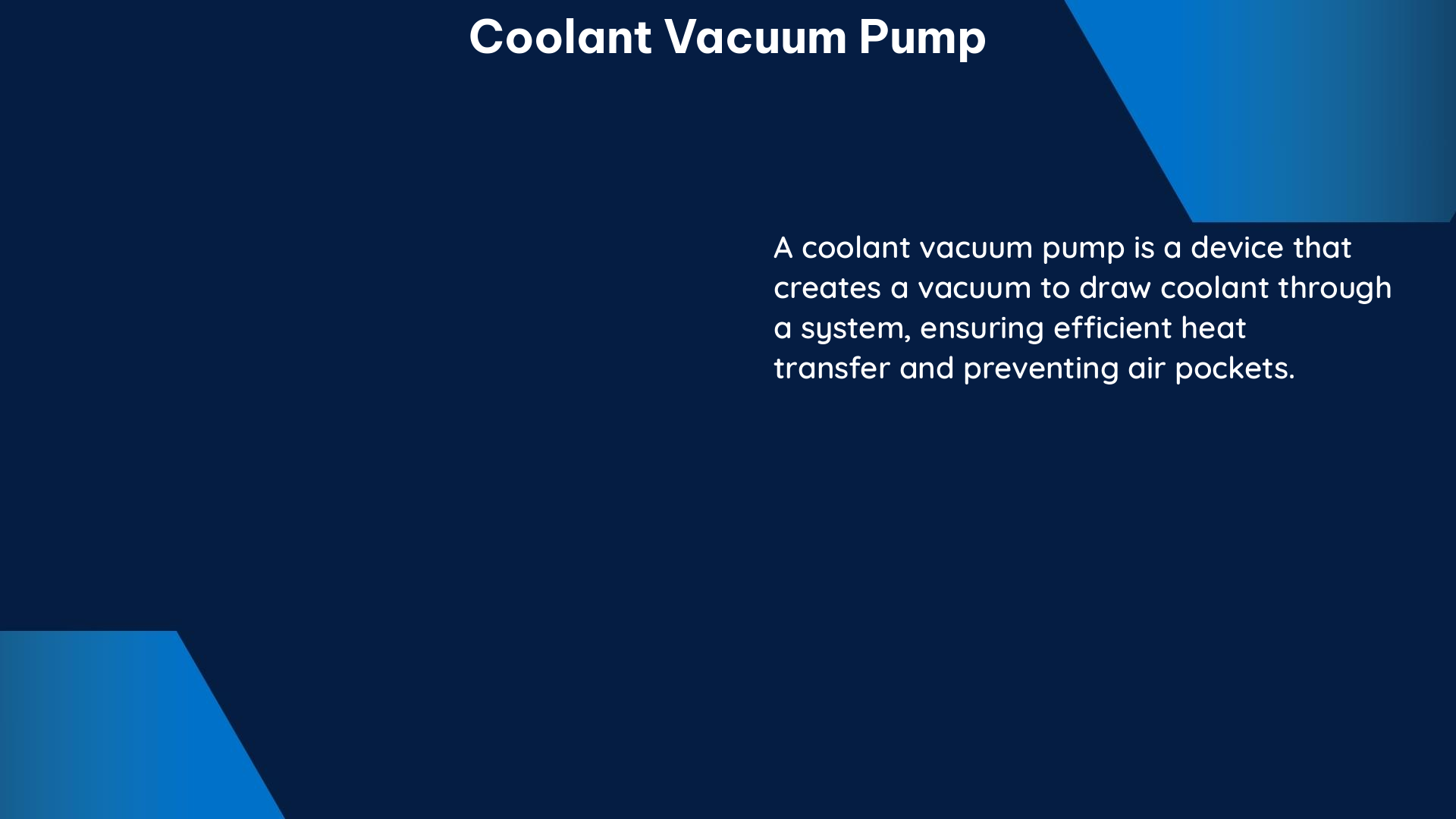A coolant vacuum pump is a crucial component in maintaining the efficient operation of a vehicle’s cooling system. By generating a powerful vacuum, these pumps effectively draw coolant into the system, eliminating any trapped air that could otherwise lead to overheating or damage. This comprehensive guide delves into the technical specifications, practical applications, and essential procedures for using a coolant vacuum pump.
Understanding the Mechanics of Coolant Vacuum Pumps
Coolant vacuum pumps operate on the principle of creating a high-pressure differential to draw in the coolant. These pumps are designed to generate a strong negative pressure, typically ranging from 20 to 30 inches of mercury (Hg), which is the standard unit of measurement for vacuum pressure.
The Negative Pressure Well-sealed Coolant Vacuum Refill Kit High Negative Coolant Pressure Tester, for example, can produce a vacuum of up to 28 inches of mercury (Hg), ensuring a highly efficient and effective coolant circulation. This level of vacuum is crucial for quickly removing any air pockets or trapped bubbles within the cooling system, allowing for optimal heat transfer and preventing potential engine damage.
Compatibility and Universal Fitment

Coolant vacuum pumps are designed for universal compatibility, making them suitable for a wide range of automotive applications. The Cooling System Vacuum Purge Radiator Coolant Refill Tool Kit, for instance, is compatible with various automotive water tanks, ensuring a seamless integration with your vehicle’s cooling system.
To ensure a proper fit, these kits often come with a variety of adapters and connectors, allowing you to easily connect the vacuum pump to your vehicle’s cooling system. The Negative Pressure Well-sealed Coolant Vacuum Refill Kit High Negative Coolant Pressure Tester, for example, features well-sealed adapters and connectors, providing a secure and efficient connection for both professional and DIY use.
Practical Applications and Benefits
The primary function of a coolant vacuum pump is to remove air from the cooling system, which is essential for maintaining optimal cooling performance. By eliminating trapped air bubbles, the pump ensures efficient coolant circulation, preventing hot spots and potential engine overheating.
Additionally, the use of a coolant vacuum pump can provide the following benefits:
-
Improved Heat Transfer: With the removal of air pockets, the coolant can flow more efficiently, enhancing heat transfer from the engine to the radiator, resulting in better overall cooling system performance.
-
Reduced Risk of Overheating: By maintaining a properly filled and air-free cooling system, the risk of overheating and potential engine damage is significantly reduced, extending the lifespan of your vehicle’s components.
-
Easier Coolant Refilling: The vacuum created by the pump helps draw the coolant into the system, making the refilling process more straightforward and reducing the likelihood of air pockets forming.
-
Preventive Maintenance: Regular use of a coolant vacuum pump can help identify and address any potential issues within the cooling system, such as leaks or blockages, before they escalate into more serious problems.
Step-by-Step Guide to Using a Coolant Vacuum Pump
Using a coolant vacuum pump requires careful attention to detail and adherence to proper procedures. Here’s a step-by-step guide to ensure a successful and efficient coolant system purge:
-
Prepare the Cooling System: Ensure that the cooling system is at the appropriate temperature (typically lukewarm) and the engine is turned off. This will allow for safe and controlled access to the system.
-
Connect the Vacuum Pump: Locate the appropriate connection point in your vehicle’s cooling system, such as the radiator or overflow tank, and securely attach the vacuum pump’s adapters and connectors.
-
Generate the Vacuum: Activate the vacuum pump and monitor the pressure gauge. Aim for a vacuum level of at least 20 inches of mercury (Hg) to ensure effective air removal.
-
Monitor the Coolant Level: Closely observe the coolant level in the container or reservoir connected to the vacuum pump. Maintain a consistent level to prevent air from being drawn back into the system.
-
Purge the System: Allow the vacuum pump to operate until no more air bubbles are visible in the coolant, indicating a complete air removal from the system.
-
Perform a Pressure Test: After the vacuum purge, conduct a cooling system pressure test to ensure there are no leaks. Some systems may not leak under vacuum but may exhibit leaks under pressure.
-
Refill and Top-Up: Once the air has been removed, refill the cooling system with the appropriate coolant mixture, ensuring the correct level is maintained.
-
Verify Proper Operation: Start the engine and monitor the cooling system’s performance, checking for any signs of overheating or unusual behavior.
Maintenance and Troubleshooting
To ensure the longevity and optimal performance of your coolant vacuum pump, it’s essential to follow the manufacturer’s recommended maintenance guidelines. This may include regular cleaning, inspection of seals and gaskets, and proper storage when not in use.
In the event of any issues or malfunctions, it’s crucial to troubleshoot the problem promptly. Common troubleshooting steps may include checking for air leaks, verifying the vacuum pump’s power supply, and ensuring the proper connection to the cooling system.
By understanding the technical specifications, practical applications, and proper usage of a coolant vacuum pump, you can effectively maintain your vehicle’s cooling system, prevent overheating, and extend the lifespan of its critical components.
References:
- Cooling System Vacuum Purge Radiator Coolant Refill Tool Kit
- Negative Pressure Well-sealed Coolant Vacuum Refill Kit High Negative Coolant Pressure Tester
- Coolant Vacuum Pump Demonstration

The lambdageeks.com Core SME Team is a group of experienced subject matter experts from diverse scientific and technical fields including Physics, Chemistry, Technology,Electronics & Electrical Engineering, Automotive, Mechanical Engineering. Our team collaborates to create high-quality, well-researched articles on a wide range of science and technology topics for the lambdageeks.com website.
All Our Senior SME are having more than 7 Years of experience in the respective fields . They are either Working Industry Professionals or assocaited With different Universities. Refer Our Authors Page to get to know About our Core SMEs.